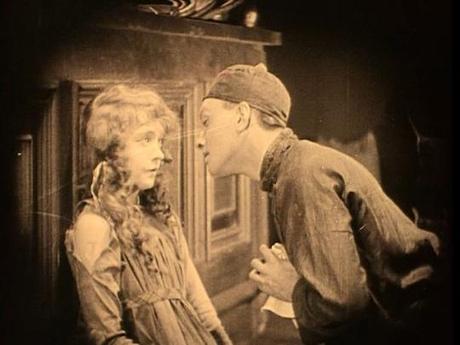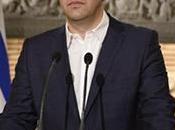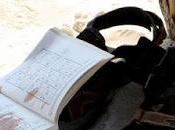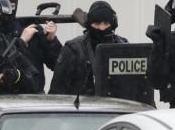 di Ossama Mohammed
di Ossama Mohammed
Ad un giovane regista siriano.
Non amo il montaggio parallelo (1), perché così sono stato creato dal dio del cinema: mendicante e uno che può scegliere?
Ma non amo il montaggio parallelo… anche per un’altra ragione.
Mentre parlo da una data parte del mondo, il Museo di Arte Moderna di New York, il giovane regista Ali al-Sheikh Khudr viene insultato e ferito nel museo delle torture di Damasco.
Ali al-Sheikh Khudr, scomparso una settimana fa, mentre io sono qui, viene violato nel corpo e nell’anima in una prigione anonima con qualcuno che sputa sulla sua telecamera.
Nel montaggio parallelo sarebbe una farsa stare sul podio senza di lui perché Ali ora esiste e non esiste, è vivo o non lo è. Perché i cannibali potrebbero distruggerlo stanotte… adesso l’alba… causa questo enorme gap temporale… che separa Ali e il suo assassino.
Che separa due visioni e due civiltà.
…………………………..
Mentre sono qui lui è qui.
Mentre lui è là io sono là.
Il tempo è tempo, sia a New York che in Siria.
Non mi piace l’equilibrismo perché è probabilmente descrittivo… e informativo.
Ali ha visto il peggio mentre bendato dalla “banda degli ignoranti”.
Sono certo che ha visto me.
“Dove sei maestro?” questo è stato il suo ultimo messaggio prima della sua scomparsa.
Un anno fa, una sua chiamata mi svegliò alle tre del mattino… Pensai fosse lo squillo della paura e della perdita.
Era Ali… ero uno squillo d’amore:
“Maestro. Mi sono innamorato… ho perso la mia virginità. È stata la prima volta”.
Non riusciva a contenere la gioia da solo e così voleva condividerla con me.
…………..
Ora si ricorda di me perché sa che io lo amo. E so che sta gridando di piacere e mi chiama…
“Dove sei o mio maestro?”.
Ali è agli arresti. È una bugia. Non ci sono arresti in Siria. Una lingua non ha un nome per quello che accade nelle prigioni siriane. Le esperienze di migliaia di donne e di uomini siriani non possono essere comprese.
O quello che accade in questo momento ad un giovane regista.
Investigazione??? Ha!
Che scultura i tuoi carnefici sperano di fare con te, Oh fratellino… Oh Ali.
Ali al-Sheikh Khudr è una scarna anima siriana; quando sfiorato dall’aria viene portato via e si perdono le tracce delle sue ossa.
Una camera.
Due occhi.
Nipotino di Andrei Trakovsky, David Lynch e Omar Amiralay.
Adesso… quando i boia violeranno la tua anima e il tuo corpo, la tua anima si innalzerà, avrà la meglio sui carnefici e ridarà vita alla morte.
Il boia… il malvagio Don Chisciotte spara colpi senza effetto, come fossero riprese e immagini di un film, che sei tu… e portano libertà… che sei tu.
…..
Ali.
Colui che ti guarda con quelli occhi che sembrano chiusi, come non avesse mai dormito e si fosse già svegliato. Come stesse cercando in ciò che vede per una nuova formula.. di ciò che vede. Confonde una visione con l’altra… e la veglia col sonno. Quando improvvisamente apre i suoi bellissimi occhi… mi rimprovera per un film che non gli è piaciuto… come l’avessi fatto io. Mi minaccia e mi accusa… rispondo “ma”… per iniziare una analisi più equilibrata.
Però questa analisi più equilibrata oscura il fragore della libertà nella gioventù siriana… Le nuove stelle di luce siriane… il nuovo.
“Ali… mio giovane maestro siriano…. DOVE SEI?”.
Tradotto dall’arabo da Elie Chalala. Traduzione italiana di Rina Brundu (2012).
Una breve nota: So che questo pezzo è stato difficile da tradurre per Elie… e lo è stato anche per me. Difficile recuperare candidatemente tutti i pensieri di questo maestro del cinema siriano mentre pensa al suo allievo (maestro?) in prigione. Ma ancora più difficile è stato vivere questa traduzione da un punto di vista emozionale: non ci sono parole – proprio come viene detto nell’articolo – nelle nostre diverse lingue per descrivere ciò che accade oggi nelle prigioni siriane. A milioni di uomini e di donne. Proprio ora. In questo stesso momento. Mentro noi siamo qui, a fare niente.
The Museum of Contemporary Torture
By Ossama Mohammed
To the young Syrian filmmaker
I do not like the parallel montage…this is how I was created by the god of cinema
“beggar and chooser”?
But I do not like the parallel montage…for another reason:
While I speak from one end of the world, from New York’s Museum of Modern Art.
The young filmmaker, Ali al-Sheikh Khudr, was subject to insult and harm.
In the museum of torture in “Damascus.”
Ali al-Sheikh Khudr, who disappeared a week ago
While I am here, his body and soul are being violated in an unknown prison.
With someone spitting at his camera.
In the parallel montage, it is a farce to be on the podium without him
Because Ali now exists or does not, is alive or is not.
Because the cannibals might destroy him tonight
now dawn.. given this vast time difference.. that separates Ali and his killer.
Between two imaginations and civilizations.
…
While I am here he is here.
While he is there I am there.
Time is time, both in New York and Syria.
I do not like balance because it is probably descriptive… and informative.
Ali saw all evil times when he was blindfolded by “by the ignorant gang.”
I am sure he saw me.
“Where are you my teacher?” This was his last message before his disappearance.
A year ago, the ring of his phone call awoke me at three in the morning.. I thought it was the ring of fear and loss.
It was Ali.. it was the ring of love:
“My teacher. I fell in love.. I have lost my virginity.
It is the first time.”
He could not overcome happiness alone, and thus wanted to share it with me.
…
Now he remembers me for he knows that I love him. And I know that he is crying out of pleasure .. and addressing me
“Where are you my teacher?”
Ali is arrested…This is a lie. There are no arrests in Syria. Language does not have a name for what goes on in Syrian prisons
The experience of thousands of Syrian women and men cannot be understood.
Or what happens this moment with a young filmmaker.
Investigation??? Ha!
What sculpture do the executioners hope to make out of you, Oh my little brother… Oh Ali
Ali al-Sheikh Khudr.. is a skinny Syrian soul; when touched by air, he is carried away with no trace of his bones.
Camera.
Two eyes.
The grandchild of “Andrei Trakovsky,” “David Lynch” and “Omar Amiralay.”
Now…when the executioners violate your soul and body, your soul will rise and overcome the executioners and restore life to the dead.
The executioner .. the evil Don Quixote strikes worthless blows, as if shots and images from a film, which is you
and they bring freedom which is you.
…..
Ali.
He who always looks at you with what appears to be closed eyes, as if he never slept and just woke up
As if he is searching in what he sees for a new formula ..of what he sees.
He confuses one vision with another vision .. and wakefulness with sleep.
When he suddenly opens his beautiful eyes.. he chides me on a film he did not like .. as if I made it.
He threatens and accuses me .. I say “but” ..to start a balanced analysis.
This balanced analysis obscures the thunder of freedom in Syria’s youth…Syria’s new stars of light…the new.
“Ali .. my young Syrian teacher …..where are you?”
____________________
Translated from the Arabic by Elie Chalala
For more Arab cultural news and views, please go to www.aljadid.com and visit us at facebookhttp://www.facebook.com/pages/Al-Jadid-Magazine/129516457130685
This article appears in Al Jadid Vol. 17, no. 64.
This text was presented in the Museum of Modern Art in New York on October 1, 2011 as an introduction by Ossama Mohammed to his film “Nujoum al-Nahar” (Stars of Light) as a tribute to Ali al-Sheikh Khudr, who was arrested by Syrian authorities.The Arabic text appeared in Al Hayat, October 26, 2011.
Featured image, Broken Blossoms or The Yellow Man and the Girl, a 1919 silent film directed by D.W. Griffith.




